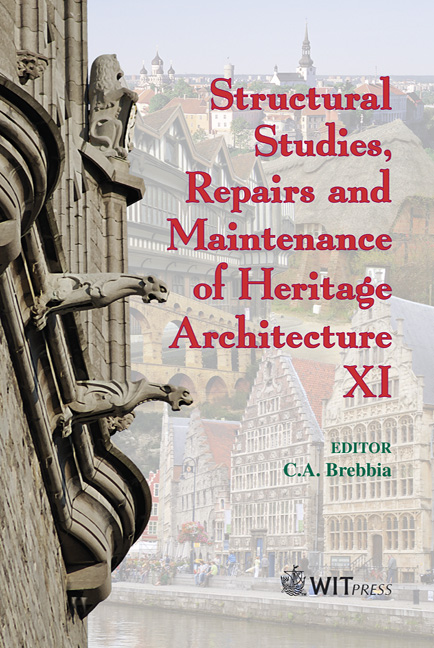Desalination For Preservation Of Murals By Electromigration And Regulated Climate
Price
Free (open access)
Transaction
Volume
109
Pages
12
Page Range
71 - 82
Published
2009
Size
1,036 kb
Paper DOI
10.2495/STR090071
Copyright
WIT Press
Author(s)
I. Rörig-Dalgaard
Abstract
The presence of salts is a threat against the preservation of cultural heritage, e.g. murals. The volume change from dissolved salt (ions) to precipitated salts results in crystallization pressure. This crystallization pressure can result in deterioration when the crystallization occurs underneath the surface, resulting in deterioration of the overlying material. The crystallization occurs most often in the evaporation zone, close to the surface, e.g. between the brick masonry and the lime layer with paintings. In the present investigation it was aimed to improve the electromigration (ion transport in an applied electric field) desalination efficiency of a wall section with murals by regulation of the surrounding climate. The idea was to obtain a relative humidity (RH) above the polluting salts deliquesce point (NaCl ~ 76%) to ensure the presence of dissolved salt (ions). A humidifier was used to create high relative humidity and the actual RH was followed with a hygrograph. After two weeks of treatment with an applied electric DC field and regulated climate, the average chloride content for all brick and mortar samples was decreased from 0.6 wt% to 0.1 wt% and for all the brick samples from 0.53 wt% to 0.06wt% on average. The present experiment clearly showed the necessity of a relative humidity around the polluting salts deliquesce point in order to dissolute the salts before they can be transported in an applied electric DC field. Significant desalination was obtained in all the positions within the same range as seen in previous experiments with capillary saturated single bricks. Keywords: desalination, electromigration, regulated climate, murals.
Keywords
desalination, electromigration, regulated climate, murals




